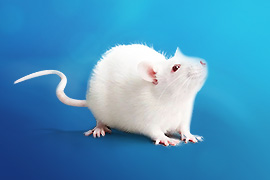Experimental animal models were constructed by surgery
Spafford Laboratory Animal Disease Models include various models such as vascular catheterization models, non-vascular catheterization models, organ injury models, obesity models, vascular disease models, endocrine and bolic disease models, and neurological disease models. Common vascular catheterization models include jugular vein catheterization in mice and rats, carotid artery catheterization in rats, femoral vein catheterization in rats, femoral artery catheterization in rats, combined jugular vein and carotid artery catheterization in rats, combined femoral vein and artery catheterization in rats, combined jugular vein and femoral vein catheterization in rats, and jugular vein catheterization combined with duodenal catheterization in rats. These models are used for pharmacokinetic experiments for drug administration and blood sampling, and can be manually administered or sampled, or used with automated equipment for long-term infusion.
Non-vascular Catheterization Model
Rat bile duct catheterization model is used for collecting bile and other experiments, and is necessary for pharmacological and basic physiological research that requires repeated sampling from the bile duct or duodenal administration. This model collects bile in the animal's physiological state, which is convenient and ensures the stability and consistency of the experiment, providing necessary conditions and guarantees for rat-related pharmacological and pharmacodynamic experiments.
-
 Wistar RatDeveloped by the Wistar Institute in the United States in 1907. In 2019, SpePharm (Beijing) Biotechnology Co., Ltd. introduced breeding from the National Rodent Laboratory Animal Seed Center.More
Wistar RatDeveloped by the Wistar Institute in the United States in 1907. In 2019, SpePharm (Beijing) Biotechnology Co., Ltd. introduced breeding from the National Rodent Laboratory Animal Seed Center.More -
 ICR miceIn 1926, the Rockfeller Institute of the United States introduced albino mouse from Switzerland to breed Swiss mouse; in 1948, it was introduced by the Philadelphia Cancer Institute and bred Ha/ICR. In 1973, it was introduced into China and in 2011, SPF (Beijing) Biotechnology Co., Ltd. introduced it from the National Rodent Experimental Animal Seed Center and bred it.More
ICR miceIn 1926, the Rockfeller Institute of the United States introduced albino mouse from Switzerland to breed Swiss mouse; in 1948, it was introduced by the Philadelphia Cancer Institute and bred Ha/ICR. In 1973, it was introduced into China and in 2011, SPF (Beijing) Biotechnology Co., Ltd. introduced it from the National Rodent Experimental Animal Seed Center and bred it.More








